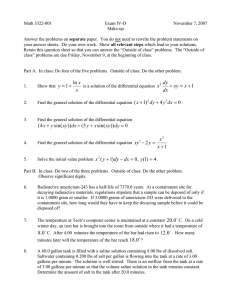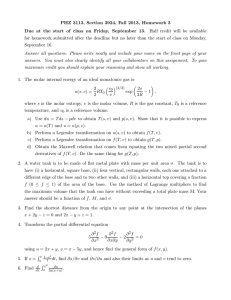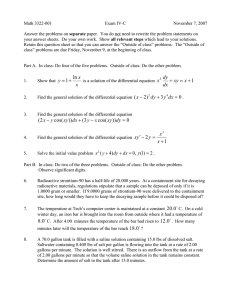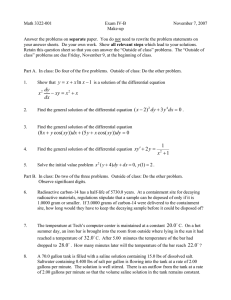Spring 2005 MATH 172 Week in Review VI
advertisement
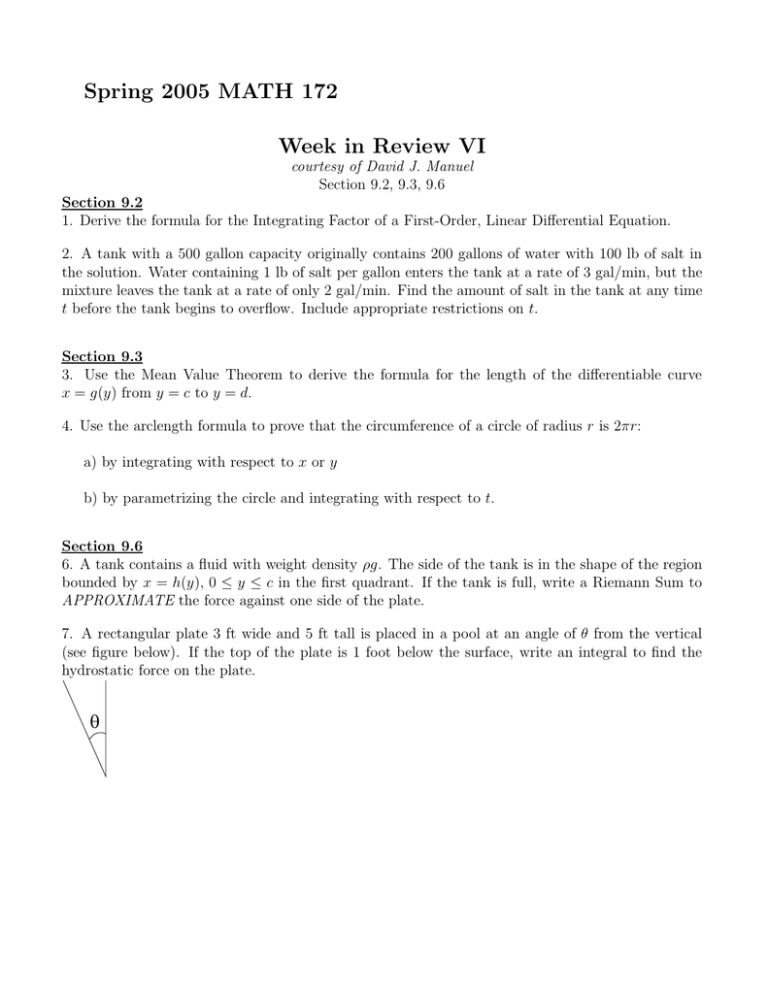
Spring 2005 MATH 172 Week in Review VI courtesy of David J. Manuel Section 9.2, 9.3, 9.6 Section 9.2 1. Derive the formula for the Integrating Factor of a First-Order, Linear Differential Equation. 2. A tank with a 500 gallon capacity originally contains 200 gallons of water with 100 lb of salt in the solution. Water containing 1 lb of salt per gallon enters the tank at a rate of 3 gal/min, but the mixture leaves the tank at a rate of only 2 gal/min. Find the amount of salt in the tank at any time t before the tank begins to overflow. Include appropriate restrictions on t. Section 9.3 3. Use the Mean Value Theorem to derive the formula for the length of the differentiable curve x = g(y) from y = c to y = d. 4. Use the arclength formula to prove that the circumference of a circle of radius r is 2πr: a) by integrating with respect to x or y b) by parametrizing the circle and integrating with respect to t. Section 9.6 6. A tank contains a fluid with weight density ρg. The side of the tank is in the shape of the region bounded by x = h(y), 0 ≤ y ≤ c in the first quadrant. If the tank is full, write a Riemann Sum to APPROXIMATE the force against one side of the plate. 7. A rectangular plate 3 ft wide and 5 ft tall is placed in a pool at an angle of θ from the vertical (see figure below). If the top of the plate is 1 foot below the surface, write an integral to find the hydrostatic force on the plate. θ



